This post is designed to describe the process I go through when I am trying to authenticate whether an item is Native American made or not.
Here is a very pretty necklace that may or may not be Native American made. In this particular case, I’m going to say guilty until proven innocent, in other words, not Native American made unless I can find some solid proof that it is.
But coming to a verdict is harder than one might think because there are far fewer definitive references for Santo Domingo, Kewa and Pueblo stone necklaces than there are for silver and stone jewelry.
Add to that, the fact that very few stone necklaces have hallmarks of any kind. And finally, tab necklaces are much more uncommon than other Native American jewelry. In fact, this is the first of its kind to arrive here.
First of all, what it it? It is a Tab Necklace – the three inlaid pendants suspended from the heishi choker put it in the Tab Necklace category.
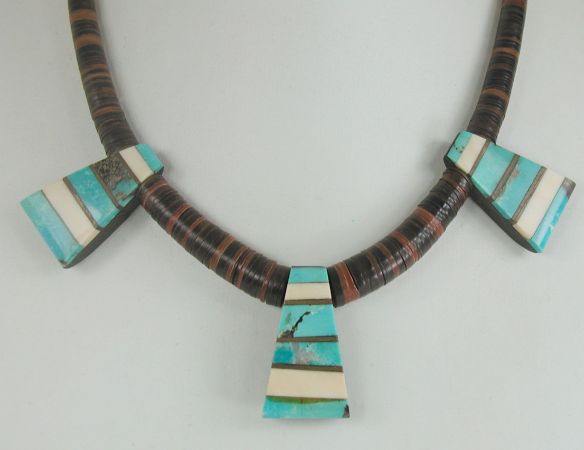 Because it measures 17 inches, I would categorize it as a choker as opposed to a necklace which is typically 24-32 inches long.
Because it measures 17 inches, I would categorize it as a choker as opposed to a necklace which is typically 24-32 inches long.
What is it made of?
The very finely turned and graduated heishi is made from brown shell which varies from a deep amber, dark honey to a very dark brown.
The heishi is very smooth and expertly produced. Heishi is made by stringing shell or stone, then grinding, sanding and polishing it into smooth edged circles. Each of the heishi discs in this choker are only 1mm thick. The graduation is very well done.
This choker is strung on string and finished off with sterling silver cones and a hook and eye fastener. The fastener seems hand made. There is sunburst stamping on the cones.
Now to the tabs. The base is made of a very dark wood. It is possibly iron wood or cocobolo wood which some Navajo artists use in conjunction with their inlay work.


The inlay on the tabs of my necklace is made with some very interesting turquoise with matrix and a white material that has the hardness of stone. There are no visible pores in the white material and, because of its density, it has been polished to a very smooth surface. It could be ivory, alabaster, stone composite ??
The channels between the turquoise and cream pieces are baffling since they have a distinct gold cast to them. They could be brass, jeweler’s gold or some variation.
Each tab has a thinner channel of metal at the bottom position. On the middle tab, that thin channel almost looks like is has leaked something which could be a metal residue or a metallic colored resin or adhesive.
As far as age, this necklace was probably made at least 15 years ago and it could be much older.
What do authentic Native American Tab Necklaces look like?
I’m including information on early tab necklaces for historical interest, not to suggest the choker I am researching is one.
Depression era tab necklaces (made beginning in the 1930’s up to the 1960’s) were constructed from various discarded materials such as 78 rpm records, car battery cases, red plastic dinnerware and Dairy Queen spoons.

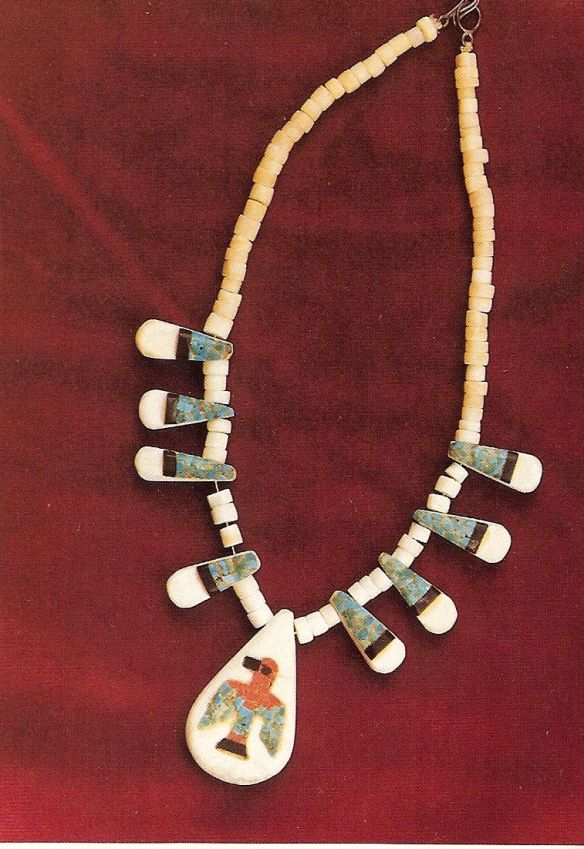
Jewelry by Southwest American Indian: Evolving Designs, Schiffer p 122
The backing for the inlay on vintage tab necklaces was usually black – from records or car batteries.
The heishi used was usually quite thick and made from white clam shell.
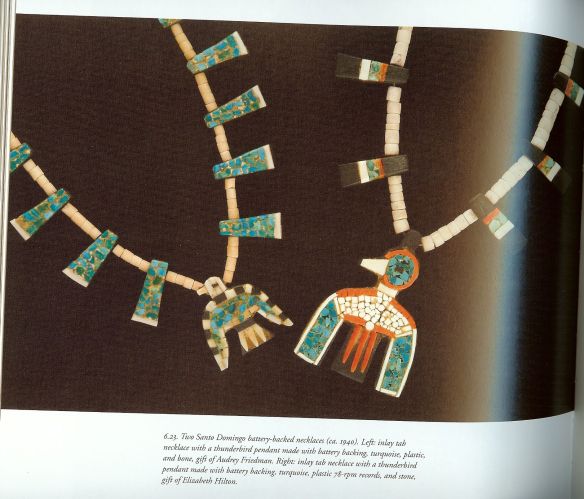
Fine Indian Jewelry of the Southwest; The Millicent Rogers Museum Collection p149. ca 1940
Most of the examples I have been able to find are necklace length, approximately 26-30″.
The ends were finished off with either a squaw wrap or with cones and hook and eye closures.
What does all of this mean about MY necklace?
I love it. It is beautiful.
Who made it? I don’t know.
Is it Native American made? Possibly but not likely……………here are the Pros and Cons:
Pros – String, cones and clasp, very fine heishi work, nice turquoise.
Cons – Wood backing for the inlay, undetermined material in the channels of the inlay.
If you have comments please leave them at the bottom of this post.
Be sure to read all of the comments as they come in because that is part of the process of learning about these pieces.
Bottom line. Although this is most probably an imported choker from the 1970’s, it is very well made, pretty and looks great on. So even though not a Native American made necklace, it still is a nice vintage item. It is what it is.
Paula

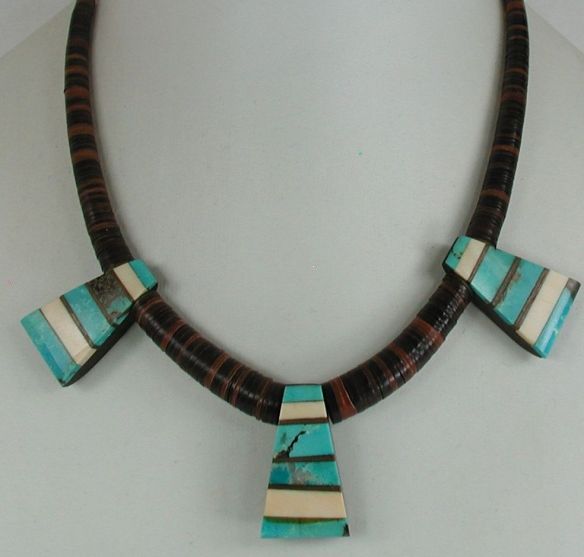

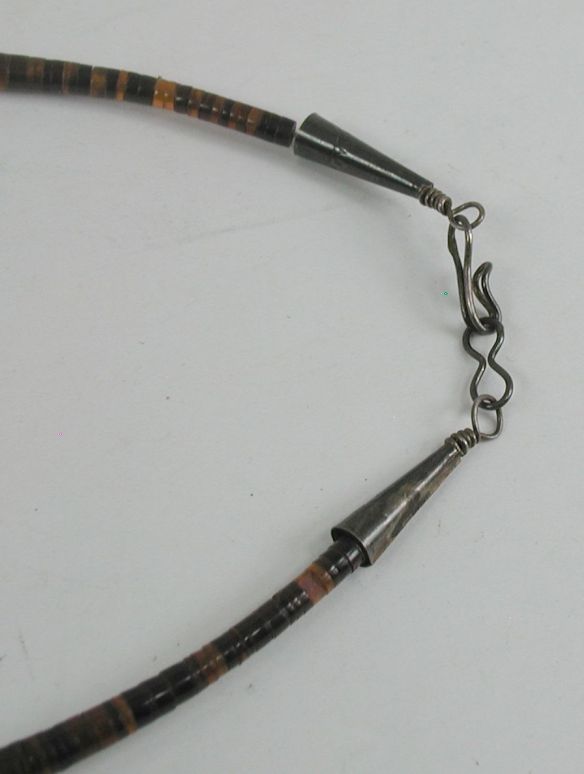
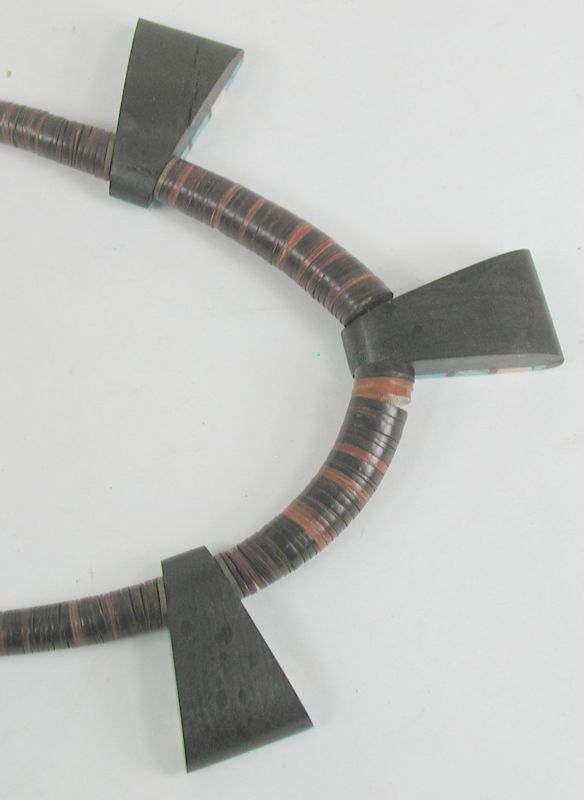
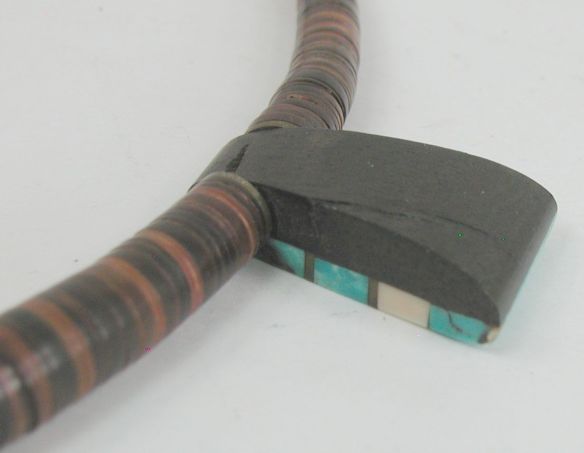
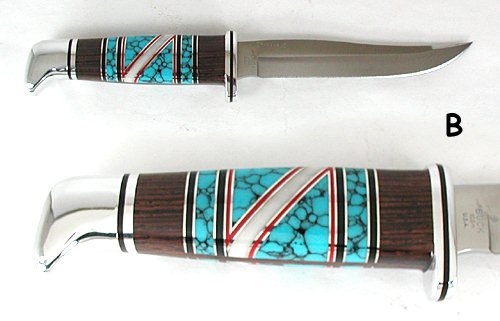
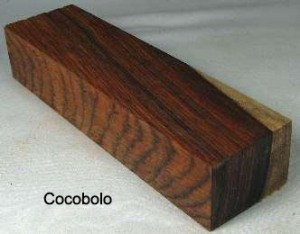
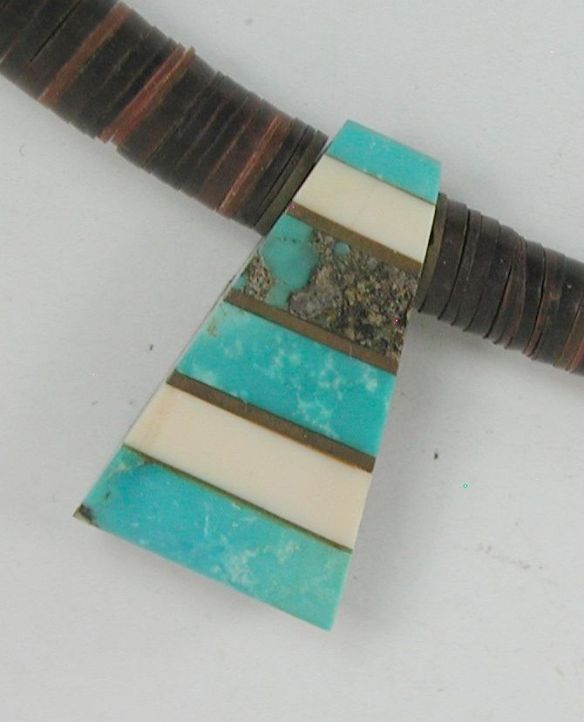

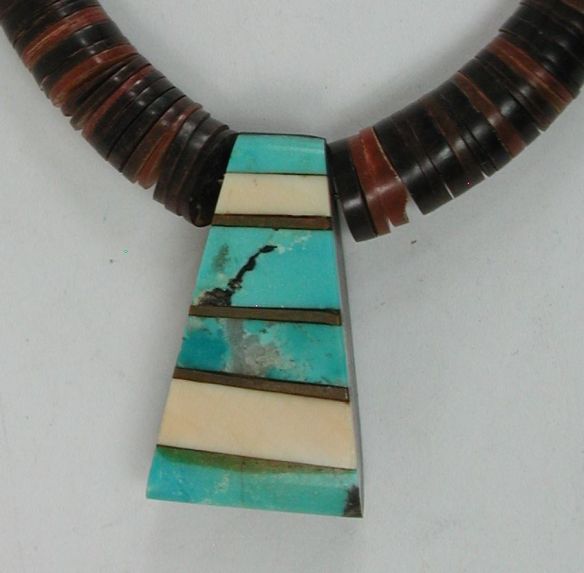
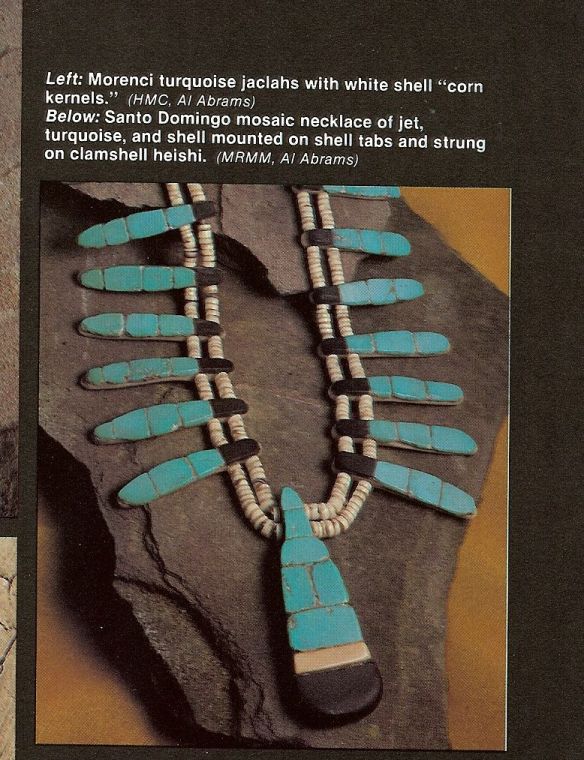
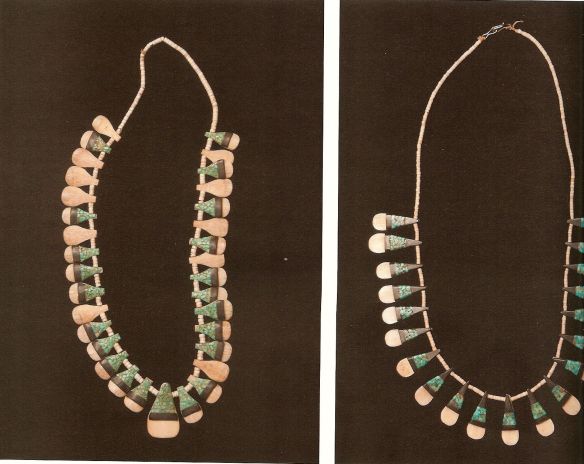
Paula, I saw a lot of these back in the 70’s. Someone was importing them and calling them “Ceremonial Necklaces”. Sometimes the heishi was shell, sometimes coconut shell. Various stones were used in the triangular tabs, usually with brass. They retailed for around $30.
Thanks Fern,
Sounds about right.
So, that would mean vintage (40 years old).
Definitely looks like brass channel.
But the tips and clasp are sterling silver.
This one has shell heishi.
Wow, $30 back then was kinda expensive for an import wasn’t it? So, using an inflation calculator, here is what I came up with
In 2016, the relative value of $30.00 from 1970 ranges from $145.00 to $500.00.
Fun.
Here is the calculator tool.
https://www.measuringworth.com/ppowerus/
Thanks again for your comments, Paula
Paula, thanks for the calculator tool! I didn’t handle any of those necklaces but some of the traders had them. Some had only one “ceremonial bead” and not all had silver cones, as I recall; some had screw type fasteners. I’d forgotten about them until I saw your post!
Hi Fern, I thought that inflation calculator was a hoot and handy too…….just to give one an idea.
The more I look at this piece, the more I am thinking Mexico since the sterling silver cones ends and sturdy clasp might tie in best with plateros rather than Asian, but mainly because the more I think about it, the more I remember all the ironwood things I have seen in Mexico and the backing on the inlay could very well be ironwood/Mexico.
What is your guess on the white material in the inlay?
I’m going to send a pic to a friend who has been in business since the 70s and see what he says……..thanks again for the conversation about this, Paula
Paula, I couldn’t tell that much about the white on yours, but I believe those back in the 70’s seemed to use a type of quartz for the white, which makes Mexico sound likely. I know they were not ivory or bone. I’m eager to hear what your friend says! Fern
When you say quartz, Fern, then that makes me wonder alabaster……..this is creamy with a tiny hint of a yellowish hue to it. So maybe not alabaster. I am unfamiliar with a quartz that would be this color.
I sent a full array of photos to my friend but then we are having 70s weather after a foot of snow last week so he is probably out playing………I’ll let you know as soon as I hear anything. Paula
My friend, also a NA jewelry store owner since the 70s, said it was an import that attempts to mimic the Old Rio Grande Pueblo look. He thought it would have been imported from the Philippines.
I know the earlier imports were from the Philippines. Over the years they improved their ability to make things look “authentic”! Enjoy your weather! My son lives in Livermore; I’ve heard about your snow! Fern
Hi Fern, Yes that’s what my friend always says, that the imports got to the point that even some of the long-time merchants were fooled – he said that they even bought a few fakes in their day which then made them extra extra extra careful……….
Your son lives in Livermore Colorado????? Wow, what a small world !! Paula
The earliest imports were from the Philippines so that’s logical. It’s always fun to try to help solve a problem! Enjoy your beautiful weather before it snows again–my son lives in Livermore so I know all about our snow!
That’s the favorite part of my job is examining materials and methods. Its the Sherlock in me !